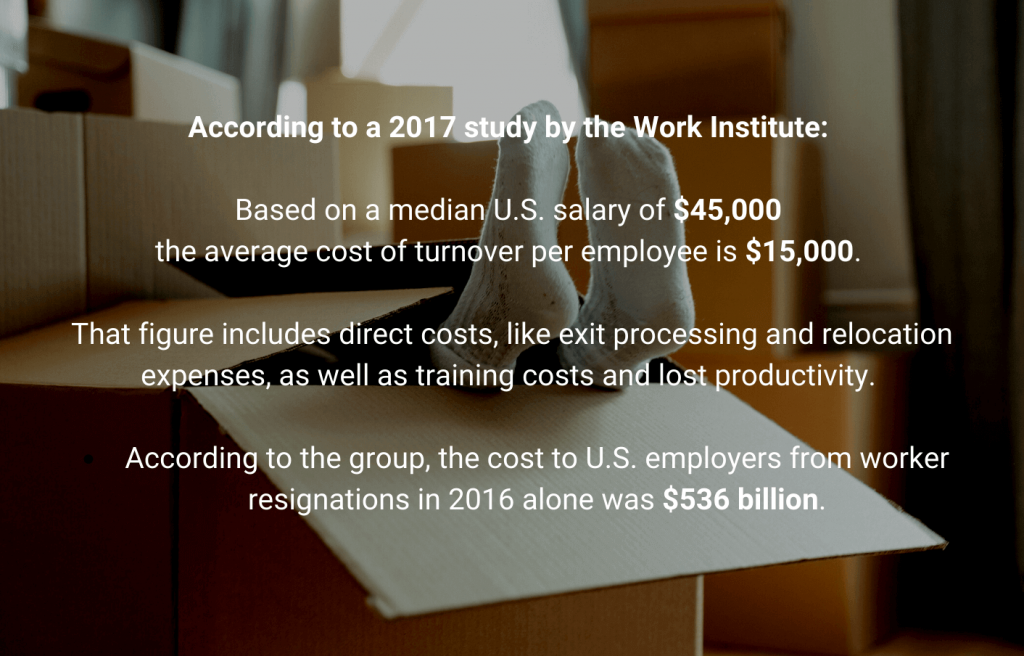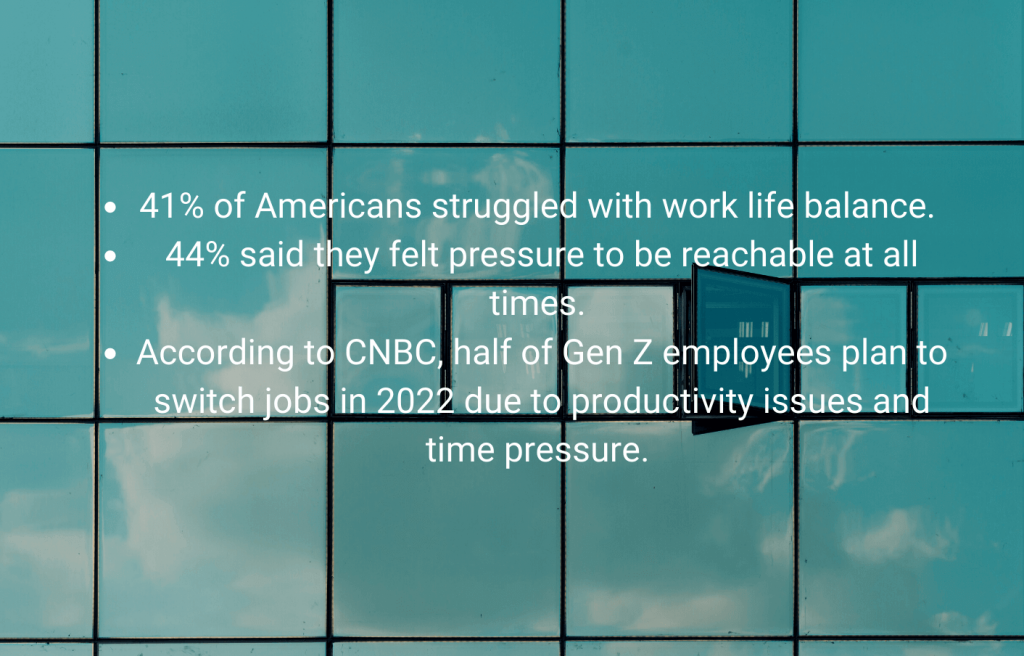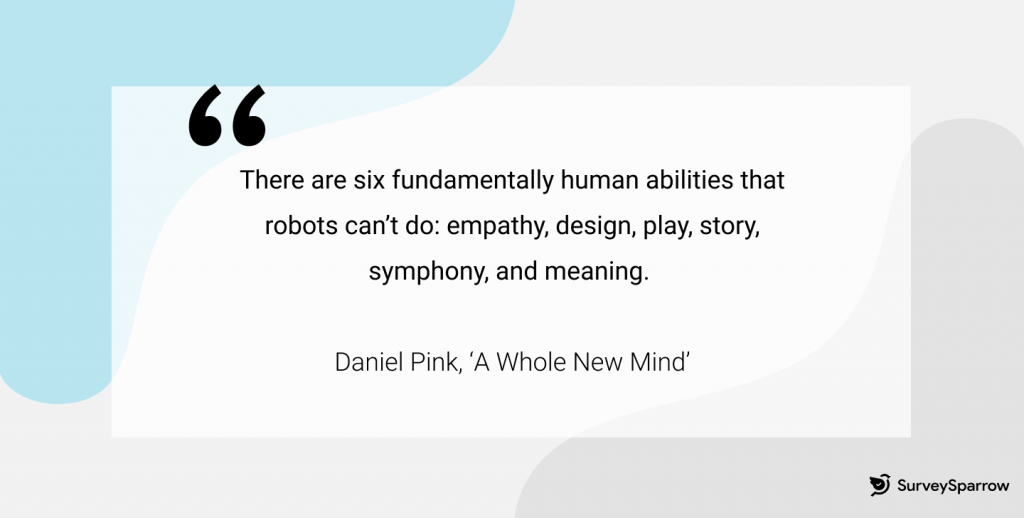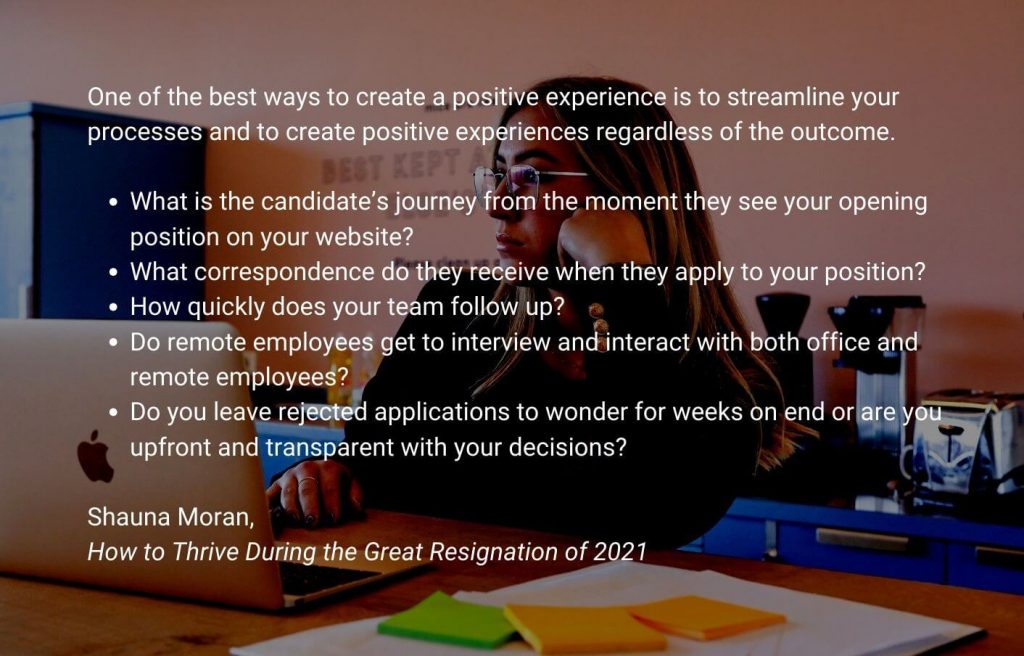Employee Experience
How to Survive The Great Resignation (and Thrive Afterward)
Article written by Parvathi Vijayamohan
Content marketer at SurveySparrow.
13 min read
19 September 2025

When you have a job, having an existential crisis about it at some point is perfectly normal. But what about an existential crisis that makes 14 million people across the world tell their bosses “I quit”? Then folks, we are in the middle of a phenomenon called the Great Resignation.
Just how great is the Great Resignation? Let’s start with some numbers:
- 41% of the world’s workforce plan to quit their jobs this year.
- According to a Monster.com survey, 95% of Americans are thinking about quitting their jobs this year.
- Many already have – 4.3 million as of August this year.
- In Germany, 1/3rd of the firms are facing a shortage of skilled employees this year.
- Data from the OECD countries shows that 22 million people have not returned to work since the pandemic struck, not even this year.
- In India, IT attrition rates have touched an all-time high of 23% this year.
Why are so many people quitting their jobs?
Full disclosure: as someone who has rage-quit a previous job, if there’s one lesson I have learned (other than “rage-quitting is a bad idea”), it is that breakups are not always because of the salary or even the benefits.

What is driving the great resignation?
Fear of physical contact? Check.
Childcare/eldercare responsibilities? Check.
Demand for better pay and job security? Check and check.
But the most important causes of the Great Resignation are ones that have been years in the making.
Pandemic epiphanies
For years, we planned our lives around our work. We prioritized office time over family time and skipped vacations to save up on earned leaves. We missed holidays, weddings and funerals for deadlines, projects and a client call that just couldn’t wait. In short, our work cultures were ones where employees had to clock in – but employers did not have to check in on their employee’s well being.
COVID 19 changed all of this. By forcing us to see just how uncertain life is, it made us re-evaluate our lives and ask ourselves what actually matters. And the answer for many people was: not work. At least not their current work.
So many quit their 9 to 5 and started freelancing or side hustles. Many chucked their current jobs to study or sign up for training courses that would help them upskill.
Others left their city homes and moved to their hometowns. For example, in Indian cities, tens of thousands of migrant workers found themselves without jobs or money. So they decided to march thousands of miles, on foot, back home to their villages.
They were walking back to another life of struggle. But at least they had family.
Work-life balance
There are two angles to this.
The first one is increased burnout. According to the Future of Time survey, longer work weeks have become a norm since people started working from home. As any WFH employee will tell you, the reasons are plenty: from work interruptions to sales fluctuations to lack of staff. This has blurred the lines between work and personal life.
The second angle is increased autonomy. According to Anthony Klotz, coiner of the phrase “The Great Resignation”, people who worked remotely during the pandemic are unwilling to give up that autonomy.
“A number of employees who worked remotely felt like they could be more of themselves than they could in the office,” says Klotz. “And maybe in some cases they felt like there was less harassment, less microaggression. They could wear the clothes that they want, wear their hair the way they want.”

12 Tips for Companies to Come Out on Top of the Great Resignation
- Take action with information
- Make a big difference with small changes
- Vaccinate against gossip
- Rejig your workflows
- Empower your management
- Set internal talent marketplaces
- Small talk ain’t small
- Adopt automation
- Write a flexible work policy
- Create great employee experiences
- Update your roadmap
- Stop, breathe, reflect
Take action with information
The Great Resignation is everywhere. But does that mean your company is going through it too? While good data doesn’t guarantee great decisions, it can be helpful in spotting patterns and fluctuations, and finding out their cause.
Stay surveys and exit interview surveys are handy tools for this. Effective exit surveys can reveal many truths about the work environment, but they can also tell you why employees leave. For example, Work Institute’s 2020 Retention Report shows that the career stage, not age, is a factor in employee turnover.
Such insights are possible through online survey software like SurveySparrow. You can create a free account to test out all of our features for 14 days.
14-day free trial • Cancel Anytime • No Credit Card Required • No Strings Attached

Make a big difference with small changes
Let’s pick the easiest and the least chaotic – small changes. You can do this on the job for the employees you have.
“I would encourage employees to go have what I would call a job-crafting conversation with their manager and say I love this 60%, this 40% not so much, what can we do?” suggests Klotz. “And that could be everything from maybe you just cut back to three days a week, and your job becomes a smaller job.” Managers can speed up this process with employee pulse surveys weekly or monthly.
Vaccinate against gossip
Is your business in the middle of the Great Resignation? High employee turnover can spark rumors and questions about how long the firm will last. Without open, honest communication, you could be at risk of a further quitting spree.
To fight misinformation, you can set up an open internal meeting every month along with an AMA session to clear doubts. Wherever possible, lay down a plan for the coming month and clearly explain the next steps. Additionally, you can use online survey tools to find out about employee concerns. Then, schedule one-on-ones with managers to discuss them.
Rejig your workflows
You are swamped with work and striving to fill in key roles. So the worst thing you can do right now is force your employees to shoulder more work. Instead, reshape your workflow according to the resources you have.
Prioritize your projects and hires accordingly, and plan for possible delays in deliveries. Then, communicate these with your customers or partners with mails, one-on-one calls or newsletters – whichever way you think is best.
One example of a company that nailed this is Amazon, with their well-publicized warnings about delivery delays during the pandemic. They also hired an additional 100,000 workers to address the surge in demand, and invested in a fleet of Prime Air delivery drones.
Empower your management
People don’t quit a company; they quit their boss. According to the same report by Work Institute, manager behaviour was one of the top reasons for employee turnover during the Great Resignation.
And it’s no wonder why. Managers embody the work culture, and they interact the most often with the staff. They also bridge the gap between staff and top leadership. Consider sending an anonymous 360 Degree Manager Feedback survey to identify the most empathetic managers in your company. Then, empower them to make decisions that support the employees and the business.
Enable talent mobility
Side hustles and weekend projects are a great way to gain experience with something new. How about embedding that in your work culture? Welcome to the internal talent marketplace.
A talent marketplace is a platform that allows people in your company to post opportunities for: open jobs, temporary assignments, long-term or part-time projects, mentorships, and any other initiative that they need talent for. Then, using AI and algorithms, talent marketplaces like Fuel50 and Workday can match relevant opportunities to employees.
As a result, the employees get to develop their hidden abilities. The company gets a smart way to move the right people into the right roles, regardless of their original role. Win win!
Small talk ain’t small
“When you’re spending 8+ hours a day with someone,” states Rama Eriksson, Digital Content Editor, “Collaborating, caring about team goals and common Netflix interests, commiserating, celebrating professional and personal goings-ons – you’re bound to build strong connections.”
For many, working from home without these connections can feel like… work. So encourage small talk on Zoom calls or Slack channels. Start a meme channel or weekly challenge, or virtual happy hours. Or just check in on employees as people. This boosts employee engagement and adds humanity to the digital squares on that Slack call.
Adopt automation
From calculators to Excel, we’ve been automating all along – the pandemic has just sped that up. By automating repetitive tasks, it is possible to work with fewer people and still deliver products or services efficiently, at the same quality.
For example, one of the most exciting applications of AI recently has been the use of chatbots to automate onboarding.
Is automation a threat to existing employees? Not really. Someone has to teach the AI what to do, and only humans can do that. Here’s where upskilling your current employees becomes essential for both employee retention, and long-term organizational growth.

Write a flexible work policy
In April 2021, GM CEO Mary Barra sent a message to employees about the return to work policy. The policy was short.
“Work appropriately”.
Sounds ambiguous? Deliberately so. It is a simple, flexible policy designed to adapt to the needs of the employee, project or week. It can expand to fit any requirement – from conducting remote training for factory employees to enabling an office worker to have a hybrid schedule. This empowers leaders to take responsibility for their teams and employees for when, where, and how they will work.
Create great employee experiences
People have had a lot of time to think during the pandemic, especially about work and exactly what they want from the work culture. So the chances are that for any open job, you are not just evaluating the candidates.
They are also evaluating you. All. The. Time. They will read the employee feedback on Glassdoor, they will reach out on LinkedIn. Pre-board or post-exit, they will refer friends if they liked what they have seen or reapply after getting more experience.
That’s why it’s crucial to create a great employee experience at every stage of the employee journey. Again, feedback software can be a helpful tool here.

Update your roadmap
The plan is in motion. Now it’s time to look at future plans and revamp them accordingly. This is a great chance to negotiate some long-term contracts, launch innovative deals or even negotiate better terms for the next quarter.
“Run a simple SWOT analysis across your organization, rediscovering the business’s strengths, weaknesses, opportunities and threats at the time,” suggests Mario Peshev, CEO of DevriX and Growth Shuttle. “Losing key talent may leave you vulnerable with your current roadmap in mind, but being flexible when it comes to future plans may reveal new possibilities or ventures you can bootstrap internally. Stress your strong suits first and foremost — and double down in areas you can still invest your full potential in.”
Stop, breathe, reflect
I’m scared of water. Despite that, I wanted to learn how to swim.
After years of reasoning that I didn’t need to swim if I knew how to bathe, I decided to take swimming lessons. So it was exhilarating when I first learned to float, kick out, and then use arm strokes. But it was also frustrating because I panicked a lot. Along with drinking half the pool water, my arms, legs and lungs refused to cooperate.
After one such session, I vented to a friend. He told me something I will never forget: “Don’t stress about what you need to do. Think about what you already did. Try to do that better.”
What had I done? In six months, I had learned the basics of swimming – not bad for someone who had feared water all her life. I was not going to Michael Phelps it anytime soon. But that was okay.
This tip can also help when you are trying to keep your business together during the Great Resignation. There will always be more to do, more challenges to face, tougher times to overcome. But take a moment to look back, to see all that you and your teams have done. You might be surprised by how far you have come.
Wrapping up
Time to look on the bright side of the Great Resignation. All of this churn means that there are a lot of talented people who aren’t working right now, and they are looking for something better.
Let your organization be that something. You have all the data you need to improve your employee experience out there. Just ask your employees.

Get upto 40% more responses on your employee surveys. Start your free trial today!
Parvathi Vijayamohan
Parvathi is a sociologist turned marketer. After 6 years as a copywriter, she pivoted to B2B, diving into growth marketing for SaaS. Now she uses content and conversion optimization to fuel growth - focusing on CX, reputation management and feedback methodology for businesses.
Related Articles

Employee Experience
Employee Motivation Questionnaire: 20+ Questions and Free Template
6 MINUTES
28 June 2022

Employee Experience
HR Reporting and Analytics: Features, Key Strategies and Trends
12 MINUTES
2 May 2023

Employee Experience
How to Calculate Employee Turnover Rate?
9 MINUTES
27 June 2018

Employee Experience
The Role of 360 Degree Coaching in Leadership Development
9 MINUTES
19 May 2023
